Psoriasis presents as a non-infectious skin pathology of a chronic nature. Statistics show that 3, 7% of the world's population are predisposed to this disease, called scaly lichen. Gender does not matter in this case, psoriasis is not a contagious disease, while the risk group is represented by people aged 14-27 years. A spotty red peel with white scales appears on the skin.
Localization is possible on any part of the body, but the most common places are the scalp, lower back, knees and elbows. As the disease in question is chronic, it manifests itself with periods of remission and exacerbations. How much does the pathology affect the patient's life and how to get rid of psoriasis forever?
Reasons for the appearance
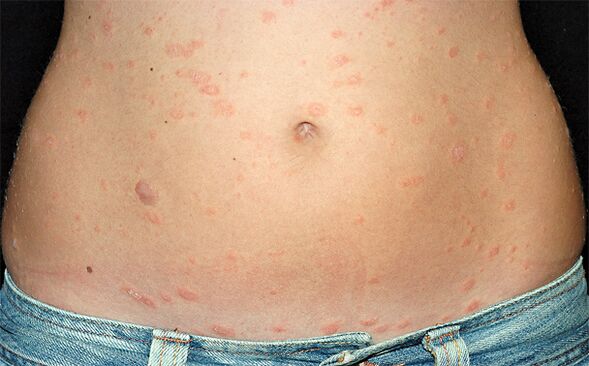
To understand what causes psoriasis, it is worth understanding that the process of pathology formation is systematic, it involves both the skin and the whole human body. The causes are not entirely clear, they can be viral, infectious, hereditary, neurogenic or mixed. Humoral and cellular immunity is activated, which contributes to the start of the autoimmune process of cellular damage, mainly epidermal cells.
Metabolism is also impaired, and burdened heredity also exacerbates skin psoriasis. As a result, cell regeneration is accelerated 3-5 times, leading to the formation of psoriatic plaques. So, why does psoriasis occur, in which the quality of life is 80% dependent on proper treatment and timely detection of the disease:
- Poor heredity;
- Depression, constant stress;
- Dysbacteriosis;
- Hormone problems;
- Allergic diseases;
- Candidiasis and streptoderma;
- Viral pathologies;
- Addiction;
- Infections of a parasitic nature;
- Metabolic problems.

Symptoms
The amount of rash at the very beginning of the pathology can be considered insignificant. Studying the symptoms will allow you to understand what psoriasis looks like on the body and how to recognize it. Psoriatic plaque is a key symptom. This is a hyperemic area of skin with scales. Against the background of healthy skin it looks noticeable and sublime. The presence of the following signs is a reason for urgent consultation with a dermatologist:
- Protruding spots on the skin with light scales;
- Itching in problem areas;
- Excessive dryness of the skin and peeling;
- Painful cracks, blisters in the palms and soles of the feet;
- Deformed and exfoliating nail plates.
Types of psoriasis
The classification of psoriasis includes the division of the disease into different types and forms. It is worth considering the following types of psoriasis, taking into account the location of the pathology and the nature of the rash:
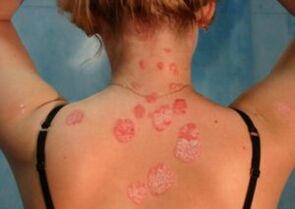
- Plaque psoriasis is often called vulgar, common or simple. This is the most common variant, which is diagnosed in 85% of the total number of patients. Inflamed areas of the skin have a typical appearance of the disease in question - easily exfoliate, red, with fever. The red skin under the scales is easily injured and can bleed. Over time, the plaques merge into the so-called paraffin lake.
- Inverse skin psoriasis affects the flexor surfaces. Inflamed areas of the skin are devoid of flaking and almost do not protrude above healthy skin. The localization is represented by skin folds, namely folds under the breast, in psoriasis in women, armpits, the area of the external genitalia, the inner surface of the thighs and skin folds in the groin. When sweating, the skin is injured or friction occurs, the condition of the inflamed areas worsens. Diabetics and children are the most common patients.
- Pustular psoriasis of the skin is characterized by the most complex symptoms. Blisters with clear uninfected inflammatory exudate rise above healthy areas of skin. Around the pustules thickened, inflamed, reddened skin with fever.
- Rupioid psoriasis in humans is characterized not only by plaque-like rashes, but also by acute inflammation of the epidermis. The surface of the skin under the plaques is bright pink and weeping.
- Guttate psoriasis in adults is characterized by an abundant number of small vesicles of purple or red color. The shape of the bubbles may resemble circles, tears, dots or drops. The affected area is often quite extensive, it can be psoriasis of the head, neck, shoulders, back, lower legs or thighs. Angina or streptococcal pharyngitis are often provokers of the development of this pathology.
Forms of psoriasis
As for the forms of psoriasis, it can be psoriatic erythroderma, arthropathic psoriasis or psoriatic onychodystrophy:
- Psoriatic onychodystrophy affecting the nails leads to deformation of the nail plate of the fingers of the lower or upper extremities. It is possible to change the color of the nail itself or the nail bed. This type of psoriasis also leads to the formation of thickening, transverse lines, spots, dots, as well as increased fragility and delamination. Even complete nail loss is possible.
- Erythrodermic psoriasis in men and women develops gradually and with complications. This is a consequence of ignored plaque psoriasis, when the epidermis becomes very red and swollen, characterized by a clear acute inflammatory process. Peeling and inflammation spread over large areas, accompanied by soreness, itching and swelling of the subcutaneous tissue. This form of pathology is more likely to be fatal than others, as the body loses its ability to regulate body temperature due to extensive inflammation, peeling and peeling.
- Psoriatic arthritis, in addition to the main symptoms, is complemented by an inflammatory process in the joints and connective tissue. This form of pathology can affect any joint, but most often it is small joints of the upper and lower limbs. If the disease spreads to the knee or hip joints, there is a high chance that you will lose your ability to move. The considered form of the disease represents 10-15% of all cases when psoriasis skin disease is diagnosed.
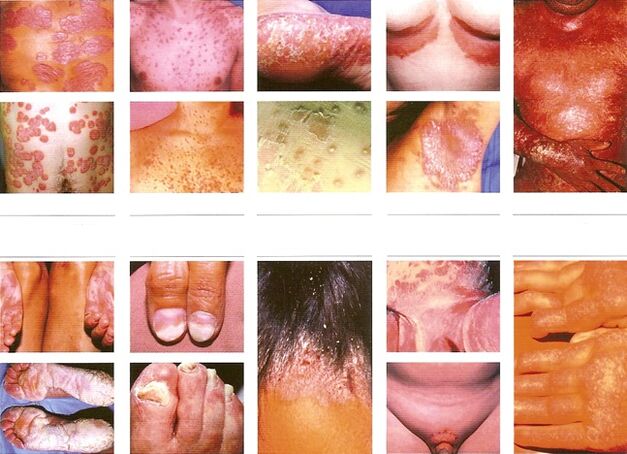
Stages of development
How psoriasis develops is characterized by three successive stages. Every patient with the disease in question goes through all of them, but with proper treatment the duration of the second stage can be significantly reduced:
- The progressive stage is characterized by an increase in the first signs and deterioration of general health;
- At the inpatient stage there is a peak in the development of pathology;
- The regression stage is represented by the disappearance of symptoms and a significant improvement in overall health.
Diagnosis
Dermatovenereologist deals with the diagnosis and further treatment of psoriasis skin disease. There is usually no difficulty in diagnosing the disease, as skin lesions are of a special nature. Rarely, additional laboratory tests are needed in the form of rheumatoid factor and complete blood counts. The involvement of a rheumatologist becomes relevant if psoriatic arthritis is diagnosed. In such a situation it is necessary to take an X-ray of the joints. The appropriateness of skin biopsy is observed in extreme cases where it is difficult to make a differential diagnosis.

Quality of life
The appearance of psoriasis leads to a significant reduction in quality of life. Difficulties can arise during social adaptation and in the workplace due to physical and emotional discomfort. Severe itching and pain can complicate the basic life processes: sleep, body care, walking, sports, professional tasks, house care, pets.
Patients are often overly concerned about their own appearance, are afraid of negative reactions from others, and have low self-esteem. Pain, along with itching and emotional discomfort, often leads to social isolation, anxiety disorders, social phobia, and depression.
Treatment
Getting rid of psoriasis involves an integrated approach using the following categories of drugs and medications.
Creams and ointments
Ointments and creams allow you to fight psoriasis quite effectively with minimal side effects. These remedies are usually applied directly to the inflamed areas:
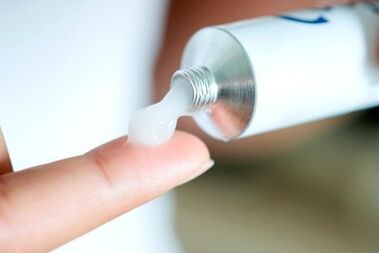
- Hormonal ointments are among the most effective, they eliminate the main symptoms and block the proliferation of keratinocytes. The most powerful tool in this category can irritate the skin, provoke dryness and thinning of the epidermis.
- Salicylic acid eliminates psoriatic scales by cleansing the skin. Dosage when using this drug is extremely important, as excessive use leads to hair loss and skin irritation.
- Retinoids are the active form of vitamin A, they are almost as effective as hormonal ointments, but the clinical effect lasts longer. Hypersensitivity to ultraviolet light is the most common adverse syndrome.
- Tar ointments reduce the severity of negative symptoms and block the growth of skin cells. Side effects include alopecia, acne or folliculitis.
- Form of ointment or gel of vitamin D. Combined use with hormonal agents gives maximum effect.
- Moisturizers help to eliminate the negative side effects in the form of dryness and itching, but they are unacceptable as the main method of treatment.
- Anthralin in ointments helps to remove scales, blocks the proliferation of keratinocytes. After application on the inflamed area, the product should be washed off after some time.
Psoriasis pills
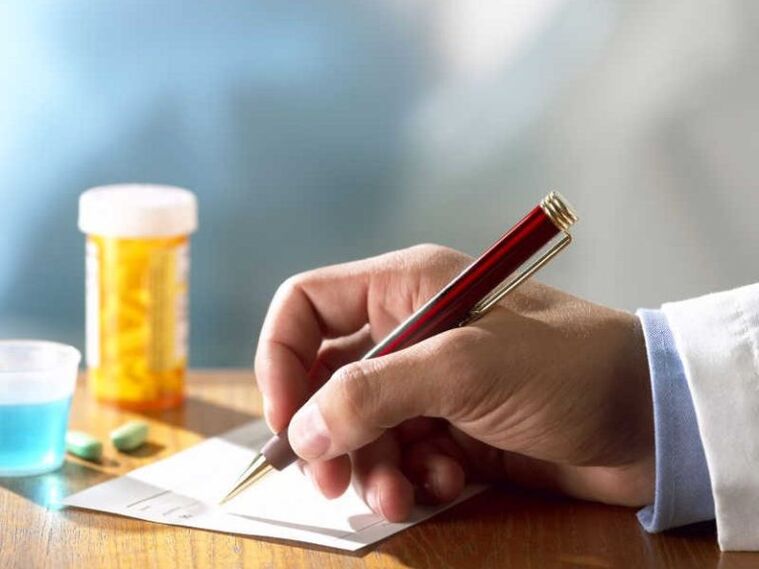
As it is not always possible to defeat psoriasis through topical therapy, it becomes necessary to supplement the treatment strategy with tablet form of the drug. Side effects can increase significantly, so constant monitoring of your overall health through testing and a visit to the doctor is mandatory:
- Systemic glucocorticosteroids reduce inflammation, swelling and itching, block the increased activity of skin cells. The side effects are extremely many, so tablets from the Anna group are rarely prescribed.
- Whole body psoriasis can be treated with methotrexate, which has an effective cytostatic and anti-inflammatory effect. The body reacts quite positively to low doses. Rare side effects include increased fatigue, decreased appetite and digestive problems.
- Retinoids are effective in cases where the skin disease psoriasis can not be treated by other means. Side effects include alopecia and inflammation of the lips. After using the tablets from this group, you can not give birth for 3 years, as retinoids provoke the appearance of birth defects.
- Cyclosporine has much in common with methotrexate and belongs to the category of immunosuppressants. Increased blood pressure and the appearance of renal pathology are the most common side effects.
- If the listed drugs cannot be used due to the characteristics of the patient's body, it is advisable to prescribe hydroxyurea.
injections
Medicines that help get rid of psoriasis can be presented in the form of injections with the following components:
- Antihistamines immediately block acute itching;
- Glucocorticosteroids in the form of injections are used if tablets and ointments with this component are not effective;
- Biological preparations are the result of the synthesis of human and animal proteins. They have a beneficial effect on the body's immune system, but their cost is too high for many patients.
Shampoo application
It is worth considering special therapeutic shampoos, as only they can eliminate psoriasis of the head:
- Antifungal shampoos are effective if the cause of the pathological inflammation is a fungal infection;
- Shampoos containing corticosteroids;
- Tar shampoo or soap is used to remove psoriatic scales, as well as to reduce burning and itching. It is also acceptable to add birch tar directly to the shampoo that the patient usually uses.

Medications
If the appearance of psoriasis is diagnosed in time, many drugs can lead to the right result, the specialist will recommend the most appropriate.

Biologically active substances
As it is rarely possible to get rid of psoriasis quickly, supplements should be taken as adjunctive maintenance therapy:
- Vitamin D is useful because calcium is one of the most important minerals in the fight against this skin disease, and its absorption requires vitamin D. The use of this supplement in the transition phase from the active phase to the stationary phase is most effective.
- Silicon in the composition of vitamin-mineral complexes plays the role of a sorbent that attracts antigens and also improves the condition of the skin.
- Lecithin is able to quickly restore the epithelial cells that die in this pathology. The integrity of the skin is restored much faster, and the inflammatory process becomes less pronounced.
- Omega-3 acids and fish oil also help eliminate the inflammatory process.
Folk methods of treatment
To increase the effectiveness of drugs, complex therapy can be supplemented with alternative therapies, but keep in mind that psoriasis of the back and other areas may be sensitive to allergens, so you should first consult your doctor:

- Chinese green tea helps reduce discomfort due to itchy skin, plaques lighten. It can be applied internally in the form of a drink or externally in the form of masks on the affected areas.
- Sunbathing can reduce the symptoms of psoriasis, especially in combination with sea water. Exposure to ultraviolet rays should not be direct, it is better to sunbathe in the shade. If you ignore this recommendation, the manifestations of psoriasis will be eliminated only for a while, but soon the disease will return with even more pronounced negative symptoms.
- Ointment of birch tar, salicylic alcohol and sea buckthorn oil should be applied directly to the affected areas for 2 hours. If the psoriasis of the abdomen or back is extensive enough, it is worth putting gauze on the ointment. After washing the ointment it is necessary to apply a tincture of celandine in the form of oil.
- Flaxseed infusion allows you to eliminate the clinical symptoms of the disease in question for a week. For one day, soak a spoonful of seeds in a glass of boiling water, then boil, cool and strain, take in the morning before meals in combination with activated charcoal (1 tablet per 10 kg of body weight). The course should last 20 days, even if the symptoms of psoriasis have disappeared. Products with caffeine in the composition should not be consumed.
- Propolis and oil in the form of ointment in a ratio of 1: 20. Mix the ingredients, cook for 15 minutes, strain and apply to affected areas. The product should be stored in a refrigerator.
- Decoctions of celery can be taken orally once a day, and the compress can be applied for 2 hours for 21 days. Three courses with a break of one week will be enough to forget about the disease for several years.
- Celandine powder and Vaseline in the form of ointment should be used for 3 days, applied to inflamed skin areas. After a break of 4 days, the course continues until the external manifestations completely disappear. To prepare the product, all components are mixed in equal proportions.
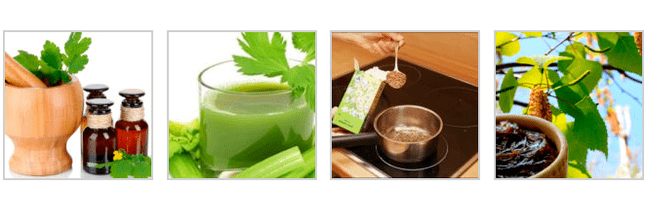
Prevention
The prevention of psoriasis, as well as measures to prevent exacerbations, are as important as the treatment itself:
- The purity of the skin should be monitored very carefully, use moisturizers based on natural ingredients.
- Monitor your overall health, especially if you have immune problems. The intake of multivitamin complexes is a mandatory component of the prevention of psoriasis.
- Regular massage improves lymph flow and blood circulation, so the products of putrefaction are removed faster and the skin is better cleansed.
- Any contact with household chemicals should be kept to a minimum. Gloves and household respirators are mandatory safeguards if it is not possible to transfer household chores to other family members. When choosing household chemicals, pay attention to the presence of dyes, chemicals and fragrances. The level of the Christmas tree should be equal to the natural one. It is also worth minimizing the use of skin care cosmetics and make-up.
- Often the first signs of the disease appear after nervous tension, so it is important to master various methods of relaxation and self-control. The benefits of healthy sleep should not be overlooked. In case of frequent stress, it is permissible to take herbal soothing tinctures and teas.
- Smoking is a direct provocateur of both exacerbations and the disease itself in the beginning. We are talking about smokers who use more than 20 cigarettes a day. Under the influence of cigarette smoke, immunity decreases, blood vessels are affected, the body's antioxidant defenses weaken. As for alcohol, it does not affect the appearance of this skin pathology, but it can worsen its course.

Psoriasis and pregnancy
Pregnancy significantly complicates the treatment of psoriasis, as the use of far from all drugs is allowed. It is also worthwhile to understand in detail the issue of pregnancy planning and other situations related to this period of a woman's life.
Pregnancy planning
The reproductive function of women and men is not affected by the disease. As for the possible harm to the baby, psoriasis is not transmitted through contact, so breastfeeding and communicating with the baby will not be a problem. Another thing is the ability of the disease to be transmitted at the genetic level, but the probability is not so great - 8-15% if one of the parents is sick. The risk increases if both parents are affected - 50-60%.
When planning a pregnancy, you must first undergo another course of treatment to achieve remission. We are talking specifically about a woman, because the father's condition does not affect the carrying of the fetus. Stress must also be kept to a minimum and treated responsibly in this regard.

Pregnancy
As for the pregnancy itself, many note that the course of the pathology is greatly facilitated, but the symptoms worsen immediately after birth. This is due to the weakening of a woman's immune system, as the baby actually depletes the body by absorbing nutrients through the umbilical cord. If treatment is needed during pregnancy, it is worth giving preference to safer means with minimal likelihood of side effects. Analyze your condition and you can find out how the disease will behave in future pregnancies. Then it is worth considering which drugs can be used and which should be avoided.
> zxtable border = "1" cellpadding = "0" >Cesarean section
The presence of psoriasis is not a reason to perform a cesarean section during childbirth, but it is worth considering the possibility of the Koebner phenomenon. We are talking about the appearance of psoriasis in places where the skin has been damaged. To date, no formal studies have been conducted on the rate of healing of these areas and the risk of infection.
Psoriasis after birth
After birth, in most cases there is an exacerbation of the pathology, the cause of which is stress, fatigue, chronic lack of sleep, irregular and limited diet, hormonal imbalance. Breastfeeding is allowed because the pathology is not transmitted to the child with milk, but when using drugs in large areas, breastfeeding is not recommended, as some components may enter the milk.
No drug can guarantee 100% safety for the mother and fetus, so consultation with the doctor who conducts the pregnancy is mandatory.
Despite the fact that psoriasis is chronic, with well-planned treatment it is possible to successfully eliminate the negative symptoms and avoid a reduction in quality of life due to the many limitations associated with the disease.
























